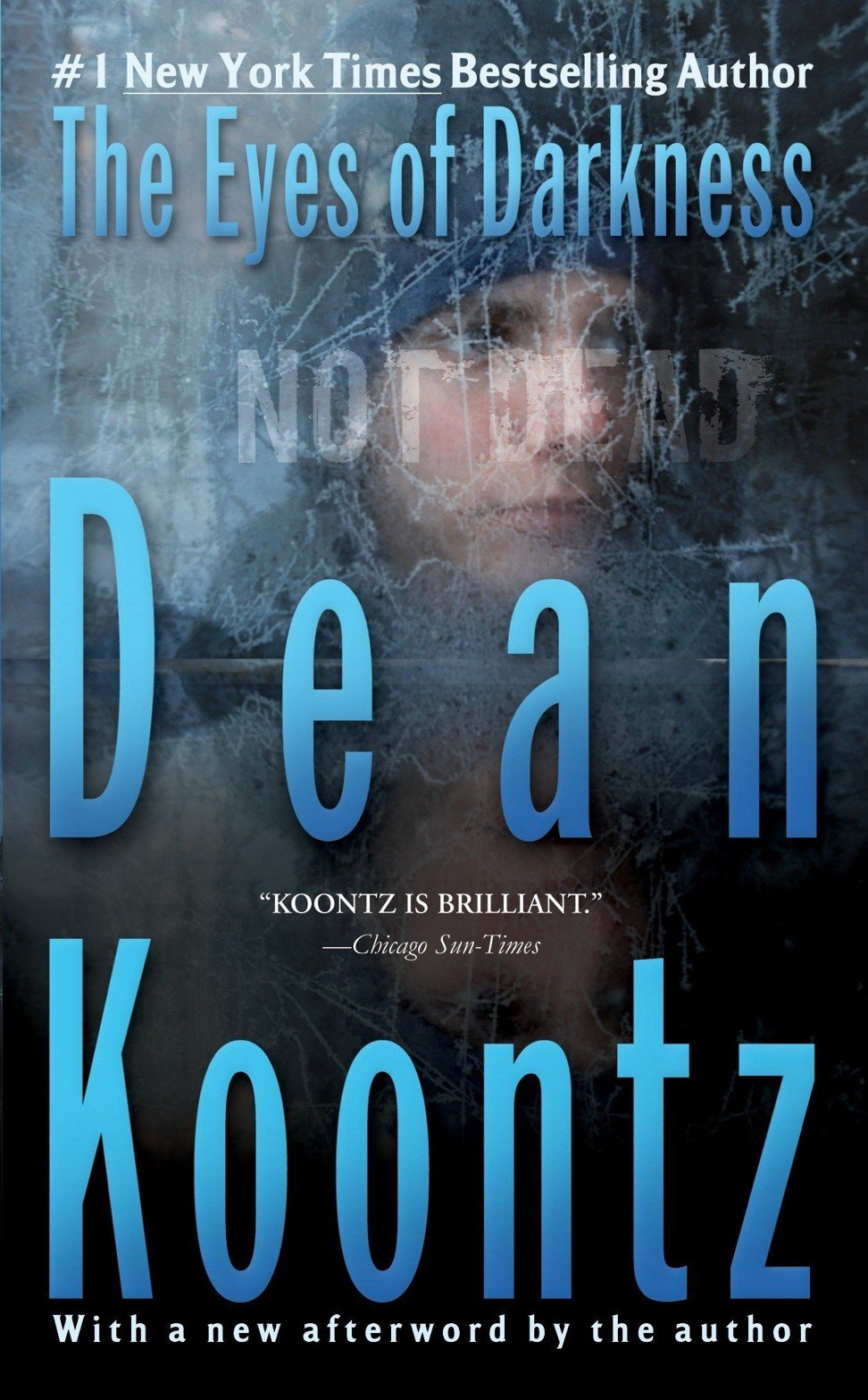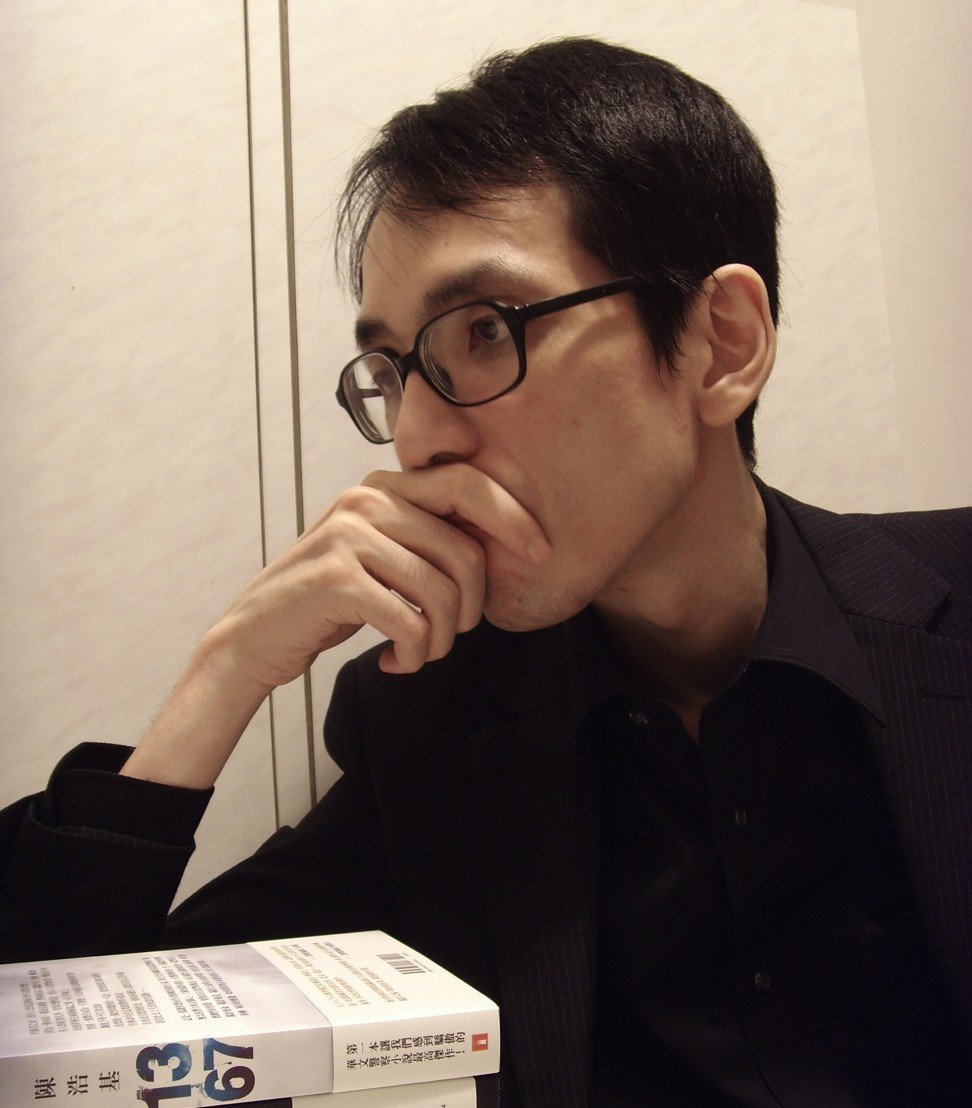Book – “The Eyes of Darkness”
A
virus called Wuhan-400 makes people terribly ill … in a Dean Koontz
thriller from 1981. How is it that some books appear to prophesy events?
- “The Eyes of Darkness” features a Chinese military lab in Wuhan that creates a virus as a bioweapon; civilians soon become sick after accidentally contracting it
- In fact, the one lab in China able to handle the deadliest viruses is in Wuhan and helped sequence the novel coronavirus the world is currently battling
Kate Whitehead

The Eyes of Darkness,
a 1981 thriller by bestselling suspense author Dean Koontz, tells of a
Chinese military lab that creates a virus as part of its biological
weapons programme. The lab is located in Wuhan, which lends the virus
its name, Wuhan-400. A chilling literary coincidence or a case of writer
as unwitting prophet?
In The Eyes of Darkness,
a grieving mother, Christina Evans, sets out to discover whether her
son Danny died on a camping trip or if – as suspicious messages suggest –
he is still alive. She eventually tracks him down to a military
facility where he is being held after being accidentally contaminated
with man-made microorganisms created at the research centre in Wuhan.
If
that made the hair on the back of your neck stand up, read this passage
from the book: “It was around that time that a Chinese scientist named
Li Chen moved to the United States while carrying a floppy disk of data
from China’s most important and dangerous new biological weapon of the
past decade. They call it Wuhan-400 because it was developed in their
RDNA laboratory just outside the city of Wuhan.”In
another strange coincidence, the Wuhan Institute of Virology, which
houses China’s only level four biosafety laboratory, the highest-level
classification of labs that study the deadliest viruses, is just 32km
from the epicentre of the current coronavirus outbreak. The opening of the maximum-security lab was covered in a 2017 story in the journal Nature, which warned of safety risks in a culture where hierarchy trumps an open culture.

Koontz has written more than 80 novels and 74 works of short fiction. Photo: Douglas Sonders
Fringe
conspiracy theories that the coronavirus involved in the current
outbreak appears to be man-made and likely escaped from the Wuhan
virology lab have been circulated, but have been widely debunked. In
fact the lab was one of the first to sequence the coronavirus.
In
Koontz’s thriller, the virus is considered the “perfect weapon” because
it only affects humans and, since it cannot survive outside the human
body for longer than a minute, it does not demand expensive
decontamination once a population is wiped out, allowing the victors to
roll in and claim a conquered territory.
It’s no exaggeration to call Koontz a prolific writer. His first book, Star Quest,
was published in 1968 and he has been churning out suspense fiction at a
phenomenal rate since with more than 80 novels and 74 works of short
fiction under his belt. The 74-year-old, a devout Catholic, lives in
California with his wife. But what are the odds of him so closely
predicting the future?Post Magazine NewsletterGet updates direct to your inboxBy registering, you agree to our T&C and Privacy Policy
Albert
Wan, who runs the Bleak House Books store in San Po Kong, says Wuhan
has historically been the site of numerous scientific research
facilities, including ones dealing with microbiology and virology.
“Smart, savvy writers like Koontz would have known all this and used
this bit of factual information to craft a story that is both convincing
and unsettling. Hence the Wuhan-400,” says Wan.
British
writer Paul French, who specialises in books about China, says many of
the elements around viruses in China relate back to the second world
war, which may have been a factor in Koontz’s thinking.

“The
Japanese definitely did do chemical weapons research in China, which we
mostly associate with Unit 731 in Harbin and northern China. But they
also stored chemical weapons in Wuhan – which Japan admitted,” says
French.
Publisher
Pete Spurrier, who runs Hong Kong publishing house Blacksmith Books,
muses that for a fiction writer mapping out a thriller about a virus
outbreak set in China, Wuhan is a good choice.
“It’s
on the Yangtze River that goes east-west; it’s on the high-speed rail
that goes north-south; it’s right at the crossroads of transport
networks in the centre of the country. Where better to start a fictional
epidemic, or indeed a real one?” says Spurrier. (Spurrier works
part-time as a subeditor for the Post.)

Hong Kong crime author Chan Ho-kei believes that this kind of “fiction-prophecy” is not uncommon.
“If
you look really hard, I bet you can spot prophecies for almost all
events. It makes me think about the ‘infinite monkey’ theorem,” he says,
referring to the theory that a monkey hitting keys at random on a
typewriter keyboard for an infinite amount of time will almost surely
type any given text.
“The probability is low, but not impossible.”

Chan points to the 1898 novella Futility,
which told the story of a huge ocean liner that sank in the North
Atlantic after striking an iceberg. Many uncanny similarities were noted
between the fictional ship – called Titan – and the real-life passenger
ship RMS Titanic, which sank 14 years later. Following the sinking of
the Titanic, the book was reissued with some changes, particularly in
the ship’s gross tonnage.
“Fiction
writers always try to imagine what the reality would be, so it’s very
likely to write something like a prediction. Of course, it’s bizarre
when the details collide, but I think it’s just a matter of
mathematics,” says Chan.
Many of Koontz’s books have been adapted for television or the big screen, but The Eyes of Darkness
never achieved such glory. This bizarre coincidence will thrust it into
the spotlight and may see sales of this otherwise forgotten thriller
jump.

Amazon is currently offering it on Kindle for just US$1. Perhaps, like Futility, it will also be reissued with some updates to make it really echo the current outbreak.
Source Internet